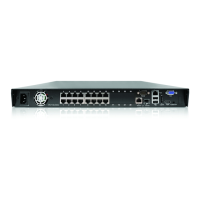The amount of data aging that is available depends on the camera you have connected to your system:
l For JPEG2000 or JPEG compression cameras, Data Aging is available at three rates:
l Full Image Rate and Resolution keeps recordings at their original quality.
l Half Image Rate discards half of the recorded data to make room for new recordings.
l Quarter Image Rate keeps 1/4 of the original recorded data so that you can still see older video.
l For H.264 cameras that support Data Aging, Data Aging is available at two rates:
l Full Image Rate and Resolution keeps the original high quality video and the secondary stream of
low resolution video.
l Low Resolution only keeps the secondary stream of low resolution video.
NOTE: The Data Aging can only occur when the secondary stream is enabled.
l For H.264 cameras that do not support Data Aging, only the Full Image Rate and Resolution video is kept.
By default, the system is set to keep recorded video for the maximum amount of time based on the available
storage.
NOTE: The listed Total Record Time is an estimate only.
1.
In the server Setup tab, click .
The Recording and Bandwidth dialog box is displayed.
The Data Aging column shows an estimate of the recording time that is available at each image rate,
given the amount of space on the recording device.
2. In the Data Aging column, move the sliders to adjust the amount of time video is stored at each image
rate.
l To change the data aging settings for all linked cameras, move the slider for one linked camera
and all linked cameras will be updated.
l To change the data aging setting for one camera, break the camera's link to other cameras by
clicking the icon to the left of its name, then make your changes.
3. In the Max. Record Time, manually enter a maximum record time or select one of the options from the
drop down list for each camera.
NOTE: If the time estimated in the Total Record Time column is shorter than what is set in the Max. Record
Time column, the camera's actual recording time will be shorter than the Max. Record Time.
4. Click OK.
Adding Users and Groups
If there will be other people using the system, you may want to add them as separate users rather than giving
them access through the default administrator account.
Before you can add individual users, you will need to add permission groups that define what users have access
to. By default, the system has the following groups:
17 Adding Users and Groups

